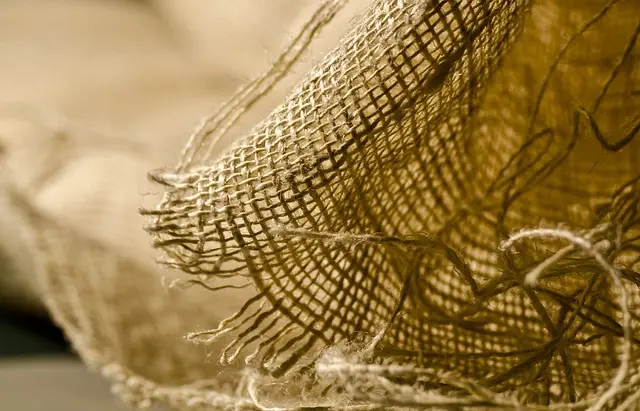Red Maeng Da Kratom and Red Bali Kratom are both well-regarded within the kratom community for their potential to help with inflammation management. Both strains originate from Southeast Asia and contain alkaloids that have been studied for their anti-inflammatory effects, though they differ in alkaloid profiles and duration of relief. Red Maeng Da is known for its high concentration of 7-hydroxymitragynine, offering immediate and strong pain relief, making it ideal for quick inflammation reduction. In contrast, Red Bali Kratom provides a more gradual release of its alkaloids, which can be beneficial for long-term inflammation or chronic discomfort. Users appreciate not only the anti-inflammatory effects but also the mood and stress relief associated with Red Bali. When selecting between these two strains, it's important to consider individual experiences and preferences, as well as consulting with a healthcare professional to ensure compatibility with overall health plans. Red Maeng Da is often favored for immediate inflammation relief, while Red Bali is preferred for its sustained effects. The choice between Red Maeng Da vs Red Bali Kratom should be tailored to the user's specific needs and the nature of their inflammatory condition.
Investigating the therapeutic properties of natural supplements has garnered significant attention in the realm of inflammation management. Among these, kratom supplements, particularly Red Maeng Da and Red Bali varieties, have emerged as subjects of particular interest due to their alkaloid profiles and potential anti-inflammatory effects. This article delves into the scientific underpinnings and practical applications of these two kratom strains, offering a comprehensive analysis of their efficacy in reducing inflammation. By examining the alkaloid compositions that distinguish Red Maeng Da Kratom from Red Bali Kratom, and complementing this with user experiences, we aim to provide insights into how each can be utilized for inflammatory conditions. The ensuing discussion will elucidate the potential benefits of these kratom strains in the context of inflammation management, guiding readers through the nuanced differences between Red Maeng Da and Red Bali Kratom in the quest for natural relief.
- Unraveling the Potential of Red Maeng Da and Red Bali Kratom for Inflammation Management
- Comparative Analysis: Effectiveness and Alkaloid Profiles of Red Maeng Da vs. Red Bali Kratom in Inflammatory Contexts
- User Experiences and Practical Insights on Using Red Maeng Da and Red Bali Kratom for Inflammation Reduction
Unraveling the Potential of Red Maeng Da and Red Bali Kratom for Inflammation Management

Red Maeng Da and Red Bali Kratom are two highly regarded strains within the kratom community for their potential to assist with inflammation management. Kratom, a tropical evergreen tree native to Southeast Asia, contains alkaloids that have been studied for their anti-inflammatory properties. Among these, Red Maeng Da Kratom stands out for its distinct effects due to a unique alkaloid composition, which may offer a potent response to inflammation. On the other hand, Red Bali Kratom is renowned for its smooth yet robust effect profile, sourced from various regions of Bali and known for its balancing properties.
When comparing Red Maeng Da vs Red Bali for inflammation reduction, it’s important to consider the individual’s unique physiology and the type of inflammation they are experiencing. Red Maeng Da is often reported to provide immediate effects due to its high concentration of 7-hydroxymitragynine, an alkaloid that may exhibit strong analgesic properties. This strain is frequently preferred for acute pain relief and inflammation. Conversely, Red Bali Kratom is revered for its long-lasting effects, offering a gradual release of its beneficial compounds, which may be more suitable for chronic inflammation or prolonged discomfort. Users often report that Red Bali provides a sense of well-being alongside its anti-inflammatory effects, making it a favorite for those seeking relief from both pain and stress. Both strains offer unique advantages, and the choice between Red Maeng Da and Red Bali Kratom for inflammation management may come down to individual preference and specific needs. It’s always recommended to consult with a healthcare professional before incorporating kratom into any health regimen.
Comparative Analysis: Effectiveness and Alkaloid Profiles of Red Maeng Da vs. Red Bali Kratom in Inflammatory Contexts

Red Maeng Da and Red Bali Kratom are two strains often compared for their potential anti-inflammatory properties, which have garnered interest in both botanical medicine and integrative healthcare practices. Both strains possess distinct alkaloid profiles, with Red Maeng Da known for its high mitragynine content alongside significant amounts of 7-hydroxymitragynine, while Red Bali Kratom is characterized by a more balanced spectrum of alkaloids. In inflammatory contexts, the efficacy of these strains can vary based on individual physiology and the specific nature of the inflammation. Research suggests that Red Maeng Da may offer robust support for reducing inflammation due to its potent alkaloid composition. Conversely, Red Bali Kratom’s broader alkaloid profile might provide a more gradual, yet sustained anti-inflammatory effect, potentially beneficial for long-term management of chronic inflammation. Users often report preference based on these differences, with some finding Red Maeng Da to be more immediate in its action, while others prefer the prolonged relief associated with Red Bali Kratom. The comparative analysis of these strains highlights the importance of understanding each kratom’s unique alkaloid profile and how it may influence their effectiveness in reducing inflammation. Users are encouraged to experiment with dosages and strain combinations under professional guidance to determine the most suitable option for their specific needs.
User Experiences and Practical Insights on Using Red Maeng Da and Red Bali Kratom for Inflammation Reduction

Users who have incorporated Red Maeng Da Kratom into their routine often report a noticeable reduction in inflammation levels, particularly those associated with arthritis and muscle soreness. The alkaloids present in Red Maeng Da are said to have potent anti-inflammatory properties that can effectively mitigate discomfort. Reports from individuals who have used this strain consistently highlight its efficacy, noting a decrease in pain levels and an improvement in overall mobility. Additionally, the long-lasting effects of Red Maeng Da seem to provide sustained relief, which is often preferred over quick but short-lived alternatives.
Red Bali Kratom also garners attention for its anti-inflammatory benefits, with users describing its effects as both balancing and soothing. While the effects may be less intense compared to Red Maeng Da, many find Red Bali’s anti-inflammatory properties to be highly beneficial, particularly in managing chronic inflammation. The balance of analgesic and anti-inflammatory effects is often cited as a reason for its preference among those seeking relief from inflammatory conditions. Users appreciate the fine line between energy and relaxation that Red Bali offers, which can be advantageous when dealing with pain that affects daily functioning. Both strains, Red Maeng Da and Red Bali, are commonly compared for their anti-inflammatory effects, with personal experiences guiding individuals to choose one over the other based on their specific needs and preferences. When comparing Red Maeng Da Kratom vs Red Bali, users often consider factors such as the intensity of relief sought, the duration of effects desired, and personal tolerance levels to make an informed decision.
In conclusion, the exploration into the anti-inflammatory potential of Red Maeng Da and Red Bali Kratom has yielded promising insights. The comparative analysis of their alkaloid profiles suggests that both strains may offer significant benefits for inflammation management. User experiences further substantiate this, providing practical insights into their application and effectiveness. While Red Maeng Da Kratom is celebrated for its potent properties, Red Bali Kratom also presents a compelling option. Both strains have demonstrated the ability to contribute to inflammation reduction, potentially serving as valuable supplements in one’s health regimen. Future research should continue to evaluate these effects and their mechanisms to fully understand the implications of incorporating Red Maeng Da and Red Bali Kratom into anti-inflammatory protocols.






